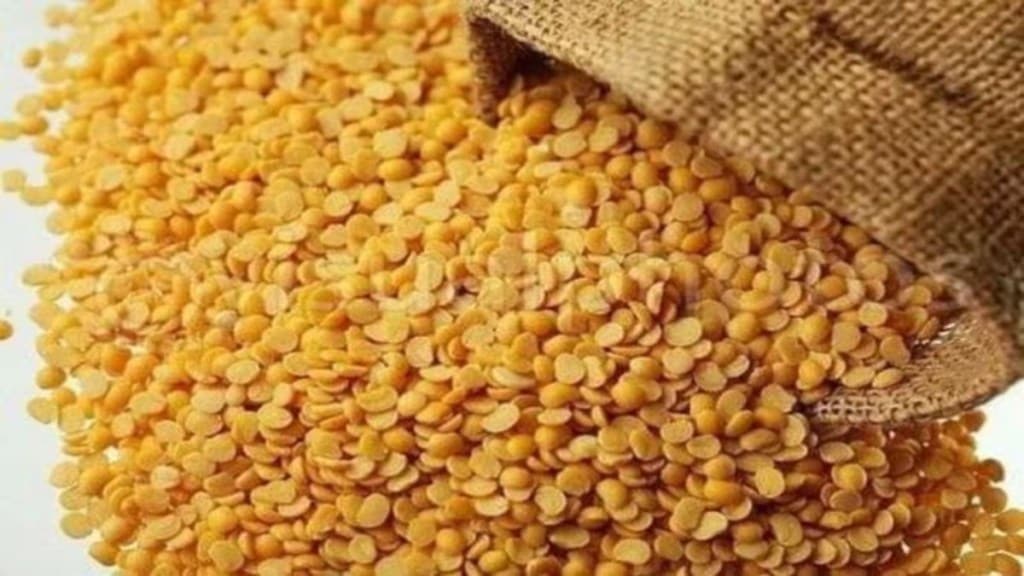Owing to a robust crop output, the government, after two years, has purchased over 0.47 million tonne (MT) of tur, a premium pulse variety, at a minimum support price (MSP) in 2024-25 kharif season, in key growing states including Maharashtra, Gujarat, Andhra Pradesh and Telangana.
Overall, the purchase of tur for building buffers by farmer‘s cooperative Nafed and NCCF in key growing states including Maharashtra, Karnataka, Gujarat and Andhra Pradesh is likely to cross 0.5 MT this season, a record since FY20.
The purchase operations under price support scheme (PSS) are prevalent only in Maharashtra and it is likely to be wound up by month end, officials said. This year’s tur procurement is projected to be in the range of 0.52 MT to 0.55 MT.
Due to drop in output in the last two seasons, mandi prices were ruling between Rs 9000 to Rs 10,000/quintal– substantially above the MSP. At this juncture, the agencies were unable to purchase tur to beef up its buffer stocks.
Against a buffer norm of 1 MT for tur, currently agencies only have tur stock of 0.44 MT.
Meanwhile, at Latur (Maharashtra), the hub of the country’s trade, mandi prices of tur on Monday hovered in the range of Rs 6800 – 6900/quintal against the MSP of Rs 7550/quintal for the 2024-25 season.
“Mandi prices in the rest of the season are likely to be around the MSP for the coming months,” Nitin Kalantri, managing director, Kalantry Food Products, a Latur based pulses processor, told FE.
As per the price monitoring cell of the department of consumers affairs, this Monday, the modal retail prices of tur have declined to Rs 120/kg, a fall of 25% compared to Rs 160/kg that prevailed in February 2025.
Meanwhile, the retail inflation in arhar dal was in the negative zone (- 9.79%) in November due to a higher base effect.
The agriculture ministry, in its second advance estimate, had estimated tur output at 3.51 MT, marginally higher than the 3.41 MT in 2023-24 crop year. However, trade sources have projected output to be in the range of 10% to 15% higher in the current crop year.
India imported over 1.1 MT of tur from several countries including Myanmar, Mozambique, Malawi and Tanzania in 2024-25.
Despite the prospects of robust kharif harvest, the government, at the beginning of the year, had extended the free import policy for tur or pigeon peas by a year, until March 31, 2026,
Agriculture minister Shivraj Singh Chouhan had earlier said that in order to increase domestic production of pulses, reduce dependence on imports, as well as encourage farmers, the Government has approved the procurement of tur, urad and lentil under price support scheme at 100% of State production for the procurement year 2024-25.
Wheat procurement crossed 27 MT, highest in four years
The wheat procurement by the agencies – Food Corporation of India and state government bodies — in the 2025-26 marketing season (April-June) have crossed 27.36 million tonne (MT), highest since the 2021-22 season.
The government is hopeful that it will be able to meet wheat procurement target of 33 MT for the ongoing season on account of bumper production prospects of over 115 MT in 2024-25 crop year (July-June), food secretary Sanjeev Chopra had stated last week.
So far, five states which have contributed mostly to the wheat procurement drive include Punjab (11.18 MT), Haryana (6.76 MT), Madhya Pradesh (7.2 MT), Rajasthan (1.27 MT) and Uttar Pradesh (0.85 MT).
In the 2024-25 and 2023-24 season, wheat purchases by agencies were 26.6 MT and 26.2 MT respectively.
Having achieved a record procurement of 43.3 MT in 2021-22 season, the purchases by government agencies under the MSP operations fell to a record low of 18.8 MT in 2022-23 season. This was primarily on account of low output.

